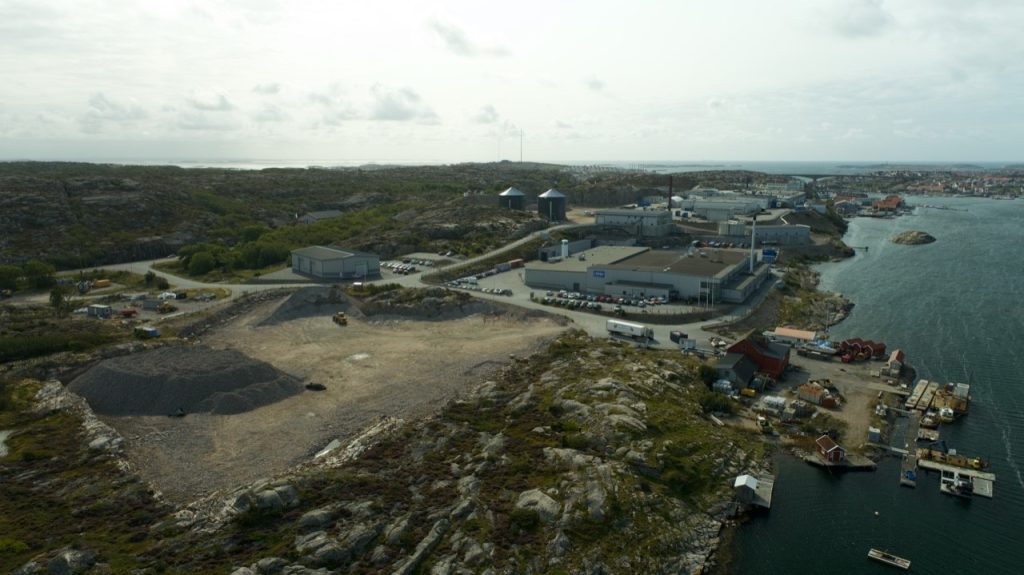
News & Views
Business Management
Recirc
Sustainability
Technology
AquaMaof signs contract for construction of Smøgenlax’s 2,000-ton production RAS facility
October 29, 2021 By Hatchery International Staff
 Smøgenlax constructions of 2,000-ton Atlantic salmon RAS facility. Photo: AquaMaof Aquaculture Technologies
Smøgenlax constructions of 2,000-ton Atlantic salmon RAS facility. Photo: AquaMaof Aquaculture Technologies AquaMaof Aquaculture Technologies has announced plans for Smøgenlax’s new 2,000-ton recirculating aquaculture system (RAS) facility for salmon farming, as part of a circular economy industrial park, Renahav, located in Kunshamn/Smögen on the West Coast of Sweden.
For AquaMaof, building the new RAS facility is the next step is the next logical step in the evolvement of the new sustainable ‘way of life’ that local industries are creating in a partnership with each other. The salmon RAS facility will benefit from sustainable energy created by Renahav and will tag into existing structures for organic sludge and more, resulting in sustainable fertilizer for the local farms.
The facility will be built in two phases, with the first currently being launched. While capacity is currently set to 2,000 tons, there are plans to increase to 6,000 tons in the future, as phase two.
“This is AquaMaof’s first project in Sweden, and we look forward to working with Smøgenlax to provide the Swedish population with high-quality salmon, grown close to market, in a natural environment, without the use of antibiotics – a healthy, nutritious, fresh and sustainable product produced in an environmentally-friendly way,” said Yoav Dagan, VP Business Development at AquaMaof.
“Sustainability and circularity are key words in the development of Smögenlax RAS and the industrial collaboration as a whole,” said Joel Oresten, chairman of the Board of Smøgenlax. “This is what customers in Sweden and abroad are asking for, and Smögenlax is planning to provide just that. The establishment of a RAS facility for growing salmon using AquaMaof’s technology is part of the company’s vision to establish a plant for the production of sustainable products, while using the waste created to produce energy, plant power and feed.”
Print this page
Advertisement
- Orkney Shellfish Hatchery welcomes new graduates through grant program
- Boosting hatchery restoration efforts





